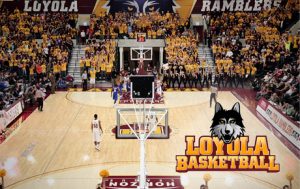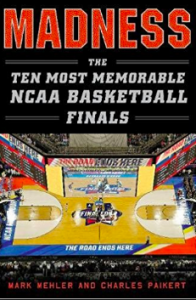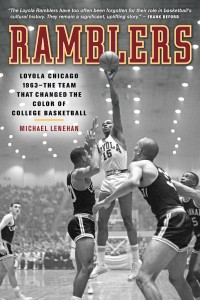Loyola Chicago, now back in the Final Four for the first time since 1963, claimed the state of Illinois’ only national title during their last trip to college basketball’s biggest stage. They did it by outlasting Cincinnati, who were then at the height of their power, coming off back-to-back national championships, partially fueled by the greatness of Oscar Robertson.
However, this Ramblers team accomplished something that was much bigger than basketball. They were civil rights pioneers. The 1962-63 Loyola basketball team broke the so-called “gentlemen’s agreement” amongst coaches in which no more than two black players would be on the floor at one time.
The best thing about Loyola Chicago basketball- the 1963 team admittedly ran up the score on southern segregationist Jim Crow teams that didn't have black players and/or refused to play teams with black players. #OnwardLU #MarchMadness pic.twitter.com/FdTKJKAdJH
— Paul M. Banks (@PaulMBanks) March 25, 2018
Back then, during some road games, black players would have to rotate so that only one of them was on the floor at a time. Yes, that’s how institutionalized racism in America once was, and it really wasn’t all that long ago when you think about it.
With the recent rise of the alt-right and #MAGA movements, America is institutionalizing racism once again.
The ’62-’63 Ramblers would regularly have three or four black starters, paving the way for the 1965-66 Texas Western (Now UTEP) team (depicted in the Disney film “Glory Road”) who would finally put the “agreement” to rest and have an all-black starting five. Basically, Loyola basketball was Glory Road three years before Glory Road.
You can learn a whole lot more about the 1963 Loyola Chicago story in a newly released book Madness: The Ten Most Memorable NCAA Basketball Finals.
In this tome, Mark Mehler and Charles Paikert chose classic championship games that also have a great back story, social significance and iconic coaches and players. Loyola Chicago over Cincy is chapter nine, “The Contrast Contest.” (Chapter eight is Texas Western/Glory Road).
https://twitter.com/PaulMBanks/status/976477192841461761
https://twitter.com/PaulMBanks/status/976479067833815041
In Madness, you see quotes from former Loyola Chicago Head Coach George Ireland, and former Ramblers players, admitting that they intentionally ran up the score on the southern segregationist schools. They took pride in beating up the backwards bigoted programs and made them feel as inferior as possible whenever they could.
After beating Tennessee Tech, at Northwestern’s gym, in the most lopsided NCAA Tournament of all time (a record that stands to this day) they headed to Michigan State to take on Mississippi State. The game came seriously close to never happening due to the southern state’s arch-segregationist governor and other bigoted leaders of the state’s government.
If it weren’t for the Mississippi State athletic department and administration leadership, who were willing to fight a bitter legal battle if needs be, this contest would have never happened.
Obviously, as the past year of current events has shown us, the American Civil War isn’t really history. We’re still fighting it today, as evidenced by the atrocity in Charlottesville this past August and the debate over Confederate monuments.
The fact that there is even “a debate” about Confederate statues, things that even Robert E. Lee himself didn’t see a need for, tells you just how relevant those issues of the early 1960s are today.
It also conveys just how far ahead of their time the ’63 Loyola Chicago team was.
If you want to learn more about them, beyond what’s in Madness, it’s all chronicled in depth in the following book:
In 2013, to commemorate the 50th anniversary of their championship, surviving members of the 1963 Loyola Chicago team were honored by President Barack Obama at the White House.
Paul M. Banks runs The Sports Bank.net and TheBank.News, which is partnered with News Now. Banks, a former writer for the Washington Times, NBC Chicago.com and Chicago Tribune.com, currently contributes regularly to WGN CLTV and the Tribune company’s blogging community Chicago Now.
Follow him on Twitter, Instagram, Sound Cloud, LinkedIn and YouTube.


